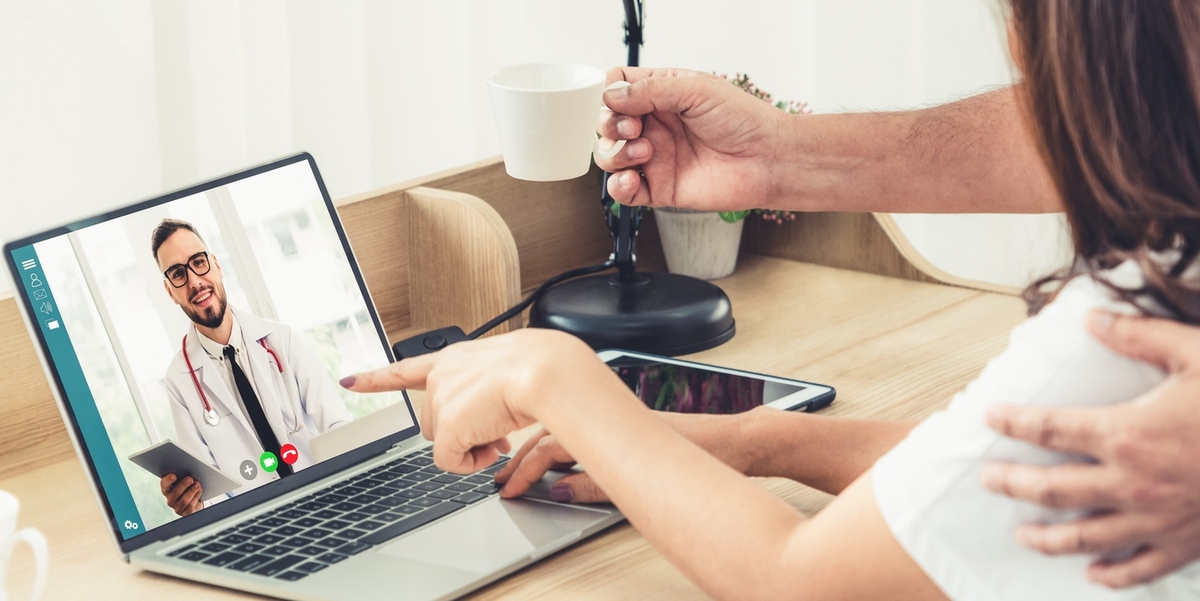Being a forest ranger, it wasn't my friend's first round on the Lyme disease rollercoaster — she'd been treated with heavy antibiotics several times already. In the past, this processed involved diagnostic lab tests for Lyme disease, multiple trips to the doctor's office, and of course periods of waiting in uncertainty.
It's now 2020, however, the year of COVID-19 and social distancing. When my friend noticed the infamous bullseye rash (erythema migrans) that often acts as an early red flag for Lyme once again, she immediately called her family doctor. Instead of having to disrupt work to come in, however, she was asked to send a picture of the rash by email. Mere minutes later, a prescription for doxycycline was electronically forwarded to the pharmacy, where she could collect it easily without ever seeing her doctor.


How the COVID-19 pandemic cause telehealth to skyrocket
Nearly all of us will have encountered people who were always scared to go to hospitals and clinics "because they're full of sick people". We may, of course, have been one of those folks, in which case we were probably met with disapproving comments.
The emergence of the COVID-19 pandemic has highlighted just how concerning spending time in a waiting room full of people with potentially contagious diseases, who go around touching surfaces that you may then come into contact with as well, can be. COVID-19 has also overwhelmed hospitals, and that's how the pandemic robbed chronic patients of the medical care they need.
Furthermore, the tools we need to streamline health care already exist now that most of us have internet connections and smartphones. Often, routine medical visits that could easily be handled electronically waste time; both patients' and medical professionals'.
We didn't make much use of e-medicine tools before the pandemic, however. One study pointed out that telehealth rates were low before COVID-19 rapidly transformed the world, and that this changed drastically in a short period of time. Just how drastic?
In this kind of situation, people requiring routine medical care that can be taken care of with online consultations never have to come into the hospital or clinic, but still have their needs met. Only those patients who show signs that they need in-person medical care are then called in for physical appointments. In the process, telehealth can greatly reduce the potential to spread contagious pathogens.
Will telehealth continue to rise even in a post-COVID world?
For e-medicine to be integrated into existing medical systems as a routine mode of care rather than an emergency-only backup plan, however, some changes are required:
- Research shows that doctors and other medical professionals do not generally have a preference for telehealth, so training programs, education, and quite frankly an attitude adjustment may be required on their part.
- In many cases, facilities and technology that expand the feasibility of delivering telehealth will also have to be created, which includes call centers, software, and hardware.
- Patients, too, will have to be educated on making full use of electronic health care. Patient preference should be taken into account; some older people, for instance, will not do well with apps and internet-based models of care but will be fine with telephone calls.
- Models that protect privacy and doctor-patient confidentiality will have to be established.
- A model that creates a smooth transition from routinely-delivered telehealth sessions (which may include consultations that focus on verbal discussions, but also visual examinations where possible) to in-person medical appointments will have to be created.
If successful as a routine mode of care, telehealth can be a lot more than sending in a picture of a tick bite and getting an easy prescription for "just in case" antibiotics without the lab tests that would previously have been asked for.
E-medicine could incorporate practices like sending in blood pressure or blood glucose reports for the previous month (all, of course, obtained with the hep of smart monitors and apps). It could mean physical and occupational therapy sessions delivered via Zoom or similar software. It could mean having psychotherapy sessions online or over the phone, which means not only that people with diverse mental health problems could select therapists specializing in their issues despite geographical distance, but it might even prove to be more comfortable for some.
Even palliative care, which aims to improve the quality of life and dignity for people who are dying, has been researched as a potential area in which e-medicine could be employed. Nurses can electronically support loved ones offering palliative care at home, which is the most comfortable place for many people at the final stages of their lives to be.
While there are certainly situations in which nothing can replace the life-saving physical care of trained medical professionals, routine electronic health care can save time, money, stress, and hassle in many others. That is, ultimately, why telehealth is not going anywhere, even if (and hopefully when) the COVID-19 pandemic subsides.
- Photo courtesy of SteadyHealth


Your thoughts on this